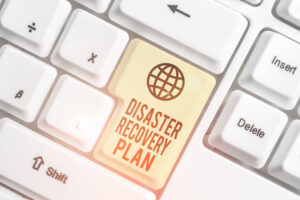The ability to quickly recover from disasters is not just an advantage; it’s a necessity. Disasters, be they natural or man-made, can strike at any time, leading to significant business interruptions and financial losses. Implementing a robust disaster recovery strategy is essential for businesses to ensure continuity and resilience in the face of unexpected events.
Understanding the Risks
Before delving into the strategies, it’s important to understand the types of risks businesses face. These can range from natural disasters like earthquakes and floods to man-made crises such as cyber-attacks and technological failures. Each risk carries its own set of challenges and requires specific strategies to manage.

Key Components of a Disaster Recovery Plan
A comprehensive disaster recovery plan typically includes the following key components:
- Risk Assessment and Business Impact Analysis: This involves identifying potential threats and evaluating their potential impact on business operations.
- Data Backup and Recovery Solutions: Regular backups of critical data are vital. Businesses should consider off-site or cloud-based backups to ensure data is not lost in the event of a physical disaster at the primary site.
- Emergency Response Plan: This includes the immediate steps to take following a disaster to minimize its impact on business operations.
- Communication Plan: A clear plan for communicating with employees, customers, and stakeholders during and after a disaster is crucial for maintaining trust and ensuring coordinated recovery efforts.
- Testing and Regular Updates: Regular testing of the disaster recovery plan ensures that it will work effectively in an actual emergency. The plan should also be updated regularly to reflect changes in the business environment and emerging risks.

Technologies that Aid Disaster Recovery
Advancements in technology have provided businesses with tools to enhance their disaster recovery strategies:
- Cloud Computing: The cloud offers scalable and flexible data backup solutions, allowing businesses to store and access data remotely.
- Virtualization: Virtualization of servers and workstations allows for quicker recovery as entire systems can be replicated and restored.
- Automated Backup Systems: These systems ensure that data backups are performed regularly and consistently, reducing the risk of data loss.
The Role of Employee Training and Awareness
A disaster recovery plan is only as effective as the people who implement it. Regular training and awareness programs for employees are critical. Employees should be familiar with the plan and their roles in the recovery process.

Partnering with Experts
Small and medium-sized businesses might find it challenging to develop and maintain a disaster recovery plan on their own. Partnering with IT firms specializing in disaster recovery can provide the expertise and resources needed to create and execute an effective plan.
It not only ensures the continuity of operations in the face of disruptions but also helps in maintaining the confidence of customers, investors, and stakeholders. By understanding the risks, investing in the right technology, training employees, and seeking expert assistance, businesses can mitigate the impacts of disasters and ensure their long-term success and stability.



